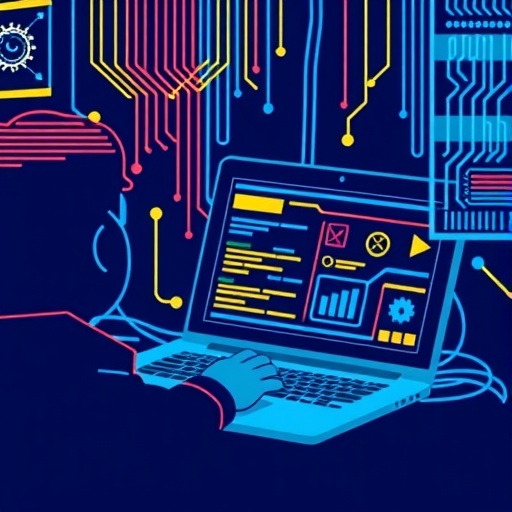As the educational landscape evolves to meet the demands of the 21st century, Pennsylvania is at the forefront of a substantial curricular transformation. The state has adopted the STEELS standards, an acronym that stands for Science, Technology, Engineering, Environmental Literacy, and Sustainability. This shift is designed to transcend traditional rote memorization, urging both educators and students toward a holistic, integrated approach to STEM education that emphasizes critical thinking, real-world applications, and interdisciplinary literacy. Full implementation of these standards is slated for the 2025–26 academic year, creating a pressing need for educational tools and resources that align seamlessly with this innovative framework.
Recognizing the challenge faced by teachers—many of whom must integrate STEM concepts across disciplines without specific training or resources—Lehigh University has introduced a groundbreaking initiative: the K-12 Computer Science STEELS Toolkit. Crafted to support educators across Pennsylvania, the toolkit offers a suite of free, flexible enrichment modules that complement existing curricula. These resources are not merely supplementary; they are carefully designed to foster computational thinking and problem-solving skills through hands-on, accessible activities that invite student engagement from elementary grades through high school.
Rooted in the intersection of cutting-edge research and classroom realities, the toolkit emerged from Lehigh’s Interdisciplinary Capstone Design program. Here, undergraduates who recently navigated their own K-12 education collaborated with local teachers to engineer activities that are both relatable and relevant. This unique blend of youthful perspective and academic rigor has produced modules that balance technical depth with user-friendly design, ensuring the content is digestible for novice educators yet intellectually enriching for students.
Central to the toolkit’s philosophy is the commitment to three-dimensional learning, a pedagogical approach embedded in the STEELS standards. This method integrates scientific practices, crosscutting concepts, and disciplinary core ideas, encouraging students to explore STEM topics through practical inquiry and real-world contexts. By introducing computational approaches like cryptography and programming logic without demanding advanced technological infrastructure, the toolkit breaks down barriers that often impede the inclusion of computer science in earlier grades.
One exemplar module guides students through cryptographic techniques, inviting them to decode secret messages using classical ciphers. This exercise concretely demonstrates abstract math and algorithmic principles while fostering curiosity and collaboration. Another module simulates programming through pencil-and-paper activities, where learners navigate mazes using logic commands that mirror foundational concepts in coding syntax and control flow. Such tactile analogues to digital processes underscore the accessibility of computer science and draw connections between physical and virtual problem-solving.
Moreover, the toolkit leverages digital technology where feasible, employing platforms like Microsoft MakeCode to introduce elementary programming concepts through creative projects such as animating a digital heart. This integration of software tools underscores the importance of blended learning environments that combine screen-based and hands-on experiences, preparing students for the increasingly digital nature of STEM careers.
The STEELS framework itself represents a paradigm shift in educational policy and curriculum design. It not only prioritizes scientific literacy but also integrates environmental stewardship and sustainability, recognizing the interconnectedness of technological advancement and ecological responsibility. This holistic approach prepares students not just to succeed academically but to engage as informed citizens capable of addressing complex societal challenges.
Educators tasked with implementing these changes often face significant constraints, including limited time, resources, and sometimes formal training in computer science or environmental literacy. The expressive clarity and adaptability of Lehigh’s toolkit directly address these barriers. Designed as enrichment rather than rigid lesson plans, the modules allow teachers to select activities that suit their classroom’s unique context, current curricula, and student interests—a critical feature in diverse educational settings.
Chayah Wilbers, program manager at Lehigh’s P.C. Rossin College of Engineering and Applied Science, underscores the importance of making STEM content approachable. Drawing on her experience as a classroom teacher and her role in Lehigh’s STEM Squad—a collaborative initiative linking university research to K-12 education—Wilbers emphasizes translating high-level scientific inquiry into digestible, engaging materials. This bridging of academic research and practical pedagogy is especially significant for elementary education, where foundational concepts take root.
Pilot feedback from local Pennsylvania schools reflects the toolkit’s effectiveness. Teachers commend the clarity of instructions, flexible implementation, and capacity to engage students meaningfully in computer science topics. The iterative refinement process, fueled by educator input, ensures the modules remain relevant and practical, encouraging wider adoption across the state.
As the initial project cycles forward, a new cohort of Lehigh undergraduates is poised to expand the toolkit’s scope, venturing beyond computer science into additional branches of engineering and refining the web platform for smoother access and navigation. This iterative development highlights a sustainable model where academic institutions continuously respond to evolving educational needs through student-led innovation.
Importantly, the entire K-12 Computer Science STEELS Toolkit is available at no cost, removing financial barriers that often inhibit access to quality STEM resources. This open-access approach aligns with broader educational equity goals, aiming to provide all Pennsylvania educators and students with the tools necessary to thrive under the STEELS standards.
Pennsylvania’s integration of the STEELS standards, supported by resources such as Lehigh University’s toolkit, signals a promising future in STEM education—one where interdisciplinary inquiry, environmental consciousness, and technological literacy converge to prepare the next generation for both the complexities of modern science and the responsibilities of global citizenship.
Subject of Research: Integration of computer science education within K-12 STEELS standards emphasizing interdisciplinary STEM literacy and environmental sustainability.
Article Title: Lehigh University Empowers Pennsylvania Educators with Innovative K-12 Computer Science STEELS Toolkit
News Publication Date: Not specified
Web References:
- Lehigh K-12 Computer Science STEELS Toolkit
- STEM Squad at Lehigh
- Interdisciplinary Capstone Design program
- Pennsylvania STEELS Standards
Image Credits: Lehigh University
Keywords: STEM education, STEELS standards, computer science, K-12 curriculum, interdisciplinary learning, environmental literacy, computational thinking, educational resources, teacher support, curriculum innovation, Lehigh University, coding education




